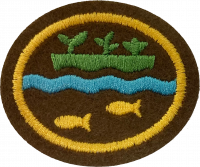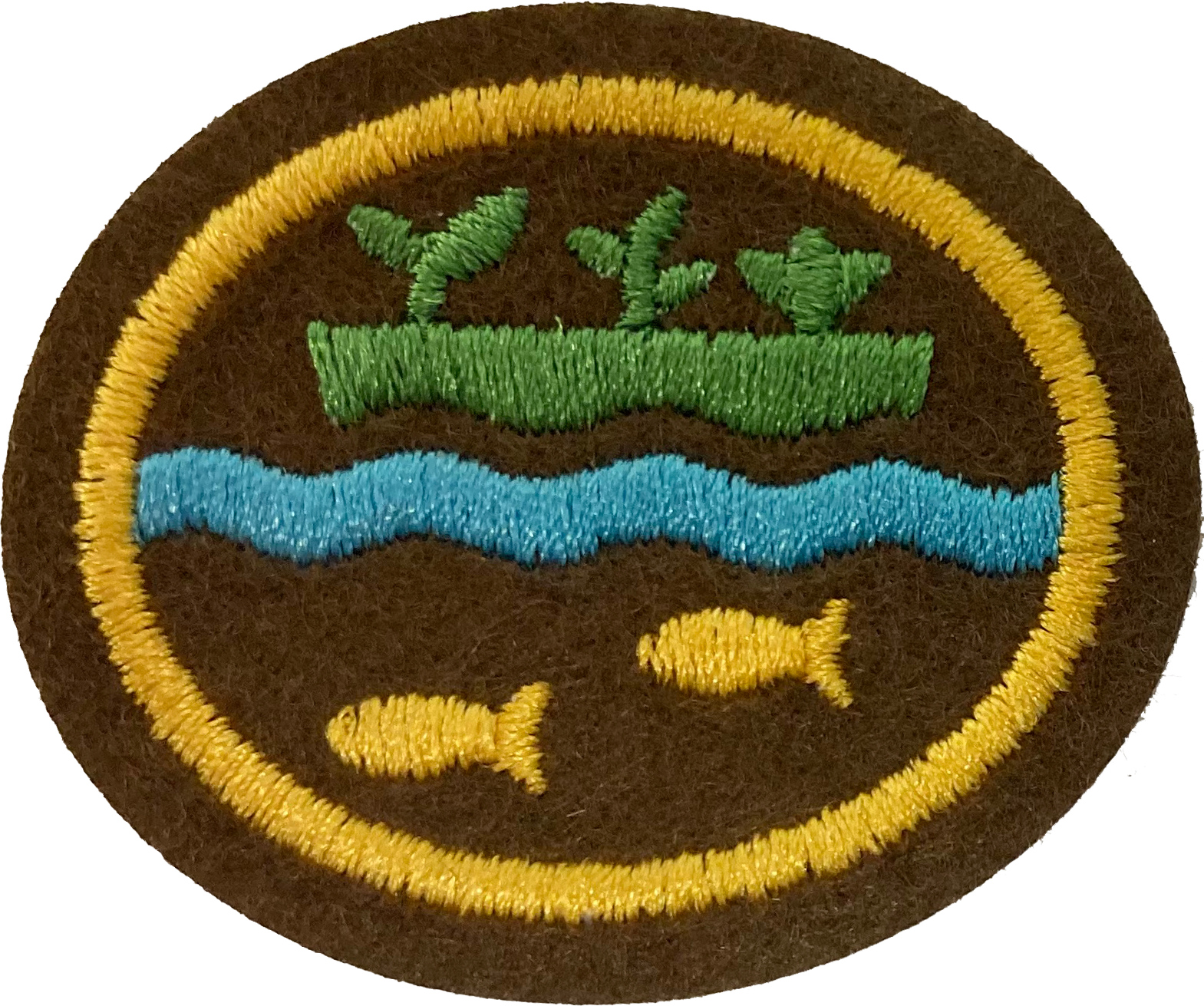Difference between revisions of "AY Honors/Hydroponics and Aquaponics/Answer Key/es"
(Created page with "{{clear}}") |
|||
| (6 intermediate revisions by 2 users not shown) | |||
| Line 8: | Line 8: | ||
<!-- 1. ¿Qué son la hidroponía y la acuaponía? --> | <!-- 1. ¿Qué son la hidroponía y la acuaponía? --> | ||
| − | + | <u>'''[[esw:Acuaponía|Acuaponía]]'''</u>: Un sistema que utiliza desechos de peces para fertilizar el crecimiento de las plantas. Las plantas filtran el agua y devuelven el agua limpia a los peces. Básicamente un ecosistema contenido. | |
| − | + | <u>'''[[esw:Hidroponía|Hidroponía]]'''</u>: Similar a la acuaponia, menos los peces. Un sistema de cultivo de plantas sin suelo, pero a menudo con grava, arena u otros medios. | |
<noinclude></noinclude> | <noinclude></noinclude> | ||
| Line 20: | Line 20: | ||
<!-- 2. ¿En qué se parecen la hidroponía y la acuaponía a otros métodos de agricultura en su área local? ¿En qué se diferencian? --> | <!-- 2. ¿En qué se parecen la hidroponía y la acuaponía a otros métodos de agricultura en su área local? ¿En qué se diferencian? --> | ||
| − | + | ''Similitudes'': Ambos incluyen el crecimiento de plantas (obviamente), utilizan agua y son productivos en el cultivo de alimentos para el consumo humano. La hidroponía a menudo implica fertilizantes. La acuaponía involucra un ecosistema. | |
| − | + | ''Diferencias'': Ni la hidroponía ni la acuaponía implican el uso de suelo. La acuaponía no usa fertilizantes pero usa peces y la hidroponía no es un ecosistema completo. Ambos se construyen a menudo en interiores para adaptarse a un mejor control de la temperatura. | |
<noinclude></noinclude> | <noinclude></noinclude> | ||
| Line 44: | Line 44: | ||
{{clear}} | {{clear}} | ||
| − | + | ''¿Cómo se comparan los sistemas de acuaponía?'': Los sistemas de acuaponía son muy similares excepto por el hecho de que la acuaponía incluye peces en el ciclo. Esto puede causar problemas en algunos de los sistemas, como los sistemas de goteo, ya que el sistema tiene que trabajar alrededor de los desechos sólidos de peces. Esto puede obstruir los sistemas e interrumpir el ciclo, posiblemente causando desbordes e inundaciones. | |
<noinclude></noinclude> | <noinclude></noinclude> | ||
| Line 97: | Line 97: | ||
<!-- 8. ¿Qué tipos de enfermedades afectan los sistemas hidropónicos? ¿Los sistemas acuapónicos? ¿Por qué un cultivador debe evitar el uso de pesticidas, fungicidas y fertilizantes en un sistema acuapónico? --> | <!-- 8. ¿Qué tipos de enfermedades afectan los sistemas hidropónicos? ¿Los sistemas acuapónicos? ¿Por qué un cultivador debe evitar el uso de pesticidas, fungicidas y fertilizantes en un sistema acuapónico? --> | ||
| − | + | {{clear}} | |
| − | |||
| − | |||
| − | |||
| − | + | {{clear}} | |
| − | |||
| − | |||
| − | + | {{clear}} | |
| − | |||
| − | |||
| − | |||
| − | |||
| − | |||
| − | |||
| − | |||
| − | |||
| − | |||
| − | |||
| − | |||
| − | + | {{clear}} | |
| − | |||
| − | |||
| − | + | {{clear}} | |
| − | |||
| − | |||
| − | + | {{clear}} | |
| − | |||
| − | |||
| − | + | {{clear}} | |
| − | |||
| − | |||
| − | + | {{clear}} | |
| − | |||
| − | |||
| − | + | {{clear}} | |
| − | |||
| − | |||
| − | |||
| − | + | {{clear}} | |
| − | |||
| − | |||
| − | |||
| − | + | {{clear}} | |
| − | |||
| − | |||
| − | |||
| − | |||
| − | |||
| − | |||
<noinclude></noinclude> | <noinclude></noinclude> | ||
| Line 167: | Line 129: | ||
| − | + | {{clear}} | |
| − | |||
| − | |||
| − | + | {{clear}} | |
| − | |||
| − | |||
| − | |||
| − | |||
| − | |||
| − | |||
| − | |||
| − | |||
| − | |||
| − | |||
| − | |||
| − | |||
| − | + | {{clear}} | |
| − | |||
| − | |||
| − | |||
| − | |||
| − | |||
| − | |||
| − | |||
| − | |||
| − | |||
| − | |||
| − | |||
| − | |||
| − | |||
| − | |||
<noinclude></noinclude> | <noinclude></noinclude> | ||
| Line 209: | Line 143: | ||
<!-- 10. Construir y operar su propio sistema hidropónico o acuapónico simple, manteniéndolo durante un mínimo de dos meses. --> | <!-- 10. Construir y operar su propio sistema hidropónico o acuapónico simple, manteniéndolo durante un mínimo de dos meses. --> | ||
| − | + | {{clear}} | |
| − | |||
| − | |||
<noinclude></noinclude> | <noinclude></noinclude> | ||
| Line 255: | Line 187: | ||
<!-- 12. Crear y compartir un pensamiento devocional de 3-5 minutos con un grupo, utilizando una lección espiritual que haya aprendido mientras estudiaba hidroponía y acuaponía. Ilustrar con artículos de su experiencia. --> | <!-- 12. Crear y compartir un pensamiento devocional de 3-5 minutos con un grupo, utilizando una lección espiritual que haya aprendido mientras estudiaba hidroponía y acuaponía. Ilustrar con artículos de su experiencia. --> | ||
| − | + | {{clear}} | |
| − | |||
| − | |||
<noinclude></noinclude> | <noinclude></noinclude> | ||
| Line 265: | Line 195: | ||
==Referencias== | ==Referencias== | ||
| − | |||
<noinclude></noinclude> | <noinclude></noinclude> | ||
{{CloseHonorPage}} | {{CloseHonorPage}} | ||
Latest revision as of 23:00, 6 December 2021
Nivel de destreza
2
Año
2021
Version
31.12.2025
Autoridad de aprobación
División Norteamericana
1
Acuaponía: Un sistema que utiliza desechos de peces para fertilizar el crecimiento de las plantas. Las plantas filtran el agua y devuelven el agua limpia a los peces. Básicamente un ecosistema contenido.
Hidroponía: Similar a la acuaponia, menos los peces. Un sistema de cultivo de plantas sin suelo, pero a menudo con grava, arena u otros medios.
2
Similitudes: Ambos incluyen el crecimiento de plantas (obviamente), utilizan agua y son productivos en el cultivo de alimentos para el consumo humano. La hidroponía a menudo implica fertilizantes. La acuaponía involucra un ecosistema.
Diferencias: Ni la hidroponía ni la acuaponía implican el uso de suelo. La acuaponía no usa fertilizantes pero usa peces y la hidroponía no es un ecosistema completo. Ambos se construyen a menudo en interiores para adaptarse a un mejor control de la temperatura.
3
¿Cómo se comparan los sistemas de acuaponía?: Los sistemas de acuaponía son muy similares excepto por el hecho de que la acuaponía incluye peces en el ciclo. Esto puede causar problemas en algunos de los sistemas, como los sistemas de goteo, ya que el sistema tiene que trabajar alrededor de los desechos sólidos de peces. Esto puede obstruir los sistemas e interrumpir el ciclo, posiblemente causando desbordes e inundaciones.
4
5
6
7
8
9
10
11
11a
These can be difficult to find, but many local growers use hydroponic or aquaponic methods. If you can find an establishment that specializes in either hydroponics or aquaponics, definitely don't pass on the opportunity to check it out!
11b
Your best chances of finding an expert on the fish used in aquaponics would be to ask the operator of an aquaponic farm. Ask them who they consult. They themselves probably did some research and could tell you why the fish that they chose would make the best fit for an aquaponic farm.
11c
To do this, you need to either buy or grow produce that is hydroponically or aquaponically grown. You might consider doing this requirement while you complete Requirement 10! Once you have the produce in hand, compare it with produce that has not been grown in one of these manners. Most produce found at the supermarket will fall into this category. Can you tell a difference between the two?
11d
Hydroponics and aquaponics can be a huge benefit to communities all over the world. Not only can it get fresh, healthy, locally-grown food to people quickly and inexpensively, but it can also be adapted to a wide range of plants, needs, and geographic locations! Use what you've learned to show the benefits of these farming methods to the world!
12


